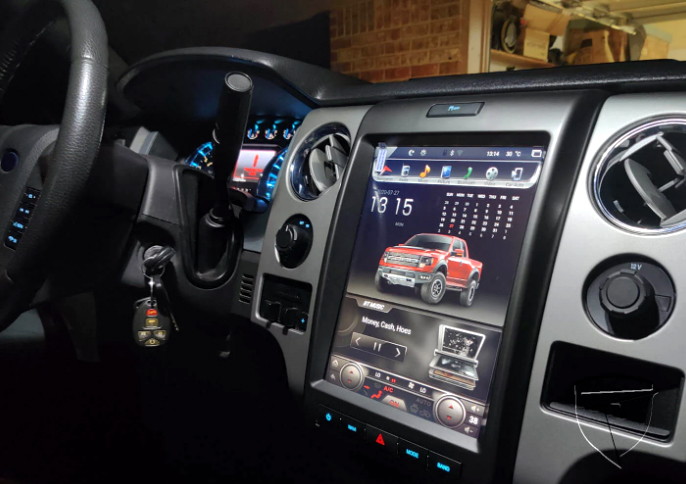What Is An Electronic Parking Brake Or EPB?

The electronic parking brake, or EPB, switch in a 2023 Ford F-150 pickup.
Every vehicle on the road is equipped with a parking brake, a hand brake, an e-brake, or an emergency brake. Regardless of the name, the parking brake is engineered to supplement the primary hydraulic braking system and hold the vehicle still when the vehicle is turned off and parked. In an emergency, it may also be used to slow the vehicle to a stop.
Traditional parking brakes acted on the rear wheels. They were mechanically operated by a long cable routed from the rear brakes to a small pedal in the footwell or to a hand lever — easily accessible by the driver. Physically pushing the pedal or firmly pulling on the lever put tension on the cable that squeezed the pads (on disc brakes) or shoes (on drum brakes) against the brake rotor or drum, effectively stopping the rear wheels from rotating.
Despite being a straightforward and effective design, cable-actuated parking brakes had several drawbacks. First, a driver could inadvertently leave the parking brake partially engaged and drive away. This would wear down the brake pads, causing the brakes to be ineffective. Second, pulling the parking brake at speed would lock up the rear wheels, possibly initiating a skid (and a potential spin). Lastly, cable-actuated brakes required maintenance as the cable stretched, and lubrication was needed to keep them operating smoothly.
In recent years, automakers have replaced the cable-actuated parking brake with an electronic parking brake (EPB). An EPB is digitally actuated via a small button or switch on the dashboard or console. When activated, an electronic control unit (ECU) signals an actuator motor to set the parking brake eliminating any physical effort by the driver.
Automakers are using two types of EPBs in late-model vehicles. The first is a “cable and puller” system, a hybrid of new and old technology. Simply put, it replaces the passenger cabin’s small pedal or hand brake with an electric actuator that puts tension on the cable. Instead of having a long thick cable running from the cabin to the rear wheels, a small electric wire is used to trigger the actuator.
The caliper-integrated EPB on the rear brake of a 2022 Chevrolet Corvette.
The second type of EPB is a “caliper-integrated” system. This is a more sophisticated method, as the cable to the rear brakes is eliminated. Instead, a small electric motor (servo) is placed at each brake caliper to lock each wheel individually. The caliper-integrated system gives automakers flexibility as they don’t have to worry about cables running through the chassis. In addition, the caliper-integrated system may be programmed to release the brake automatically when the vehicle is put in drive or reverse or set the brake when the transmission is put into park. It can also incorporate a “hill hold” feature, which holds the brakes to prevent rollback if the vehicle is on a steep incline.
Automakers have embraced EPBs because the cable-free design lets them locate the parking brake control virtually anywhere on the dashboard or console. And zero effort is required to actuate them — just a simple push or pull of a button or switch. Furthermore, advanced electronics on the vehicle will alert the driver and prevent the vehicle from moving if the parking brake is engaged.
And don’t worry, as EPBs may also be used in emergencies just like their manual predecessors. If the primary brakes are not working, pulling (and holding) the electronic parking brake switch — even while the vehicle is moving down the road — will automatically engage heavy skid-free braking and bring the vehicle to a stop!
link




